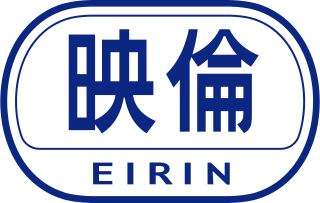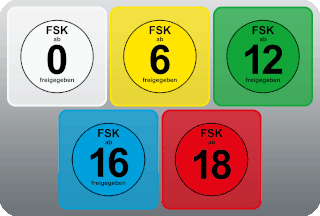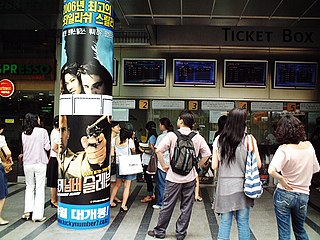An X rating is a film rating that indicates that the film contains content that is considered to be suitable only for adults. Films with an X rating may have scenes of graphic violence or explicit sexual acts that may be disturbing or offensive to some viewers. The X rating is used in different ways by different countries, and it may have legal or commercial implications for the distribution and exhibition of such films. For example, some countries may ban or restrict the sale or rental of X-rated films, while others may allow them only in specific theaters or with special taxes. Some countries may also have different criteria or definitions for what constitutes an X-rated film, and some may consider the artistic merit of the film as a factor in classification. The X rating has been replaced or renamed by other ratings in some countries over time.
The Motion Picture Associationfilm rating system is used in the United States and its territories to rate a motion picture's suitability for certain audiences based on its content. The system and the ratings applied to individual motion pictures are the responsibility of the Motion Picture Association (MPA), previously known as the Motion Picture Association of America (MPAA) from 1945 to 2019. The MPA rating system is a voluntary scheme that is not enforced by law; films can be exhibited without a rating, although most theaters refuse to exhibit non-rated or NC-17 rated films. Non-members of the MPA may also submit films for rating. Other media, such as television programs, music and video games, are rated by other entities such as the TV Parental Guidelines, the RIAA and the ESRB, respectively.
A motion picture content rating system classifies films based on their suitability for audiences due to their treatment of issues such as sex, violence, or substance abuse, their use of profanity, or other matters typically deemed unsuitable for children or adolescents. Most countries have some form of rating system that issues determinations variously known as certifications, classifications, certificates, or ratings. Age recommendations, of either an advisory or restrictive capacity, are often applied in lieu of censorship; in some jurisdictions movie theaters may have a legal obligation to enforce restrictive ratings.

The Motion Picture Production Code was a set of industry guidelines for the self-censorship of content that was applied to most motion pictures released by major studios in the United States from 1934 to 1968. It is also popularly known as the Hays Code, after Will H. Hays, president of the Motion Picture Producers and Distributors of America (MPPDA) from 1922 to 1945. Under Hays's leadership, the MPPDA, later the Motion Picture Association of America (MPAA) and the Motion Picture Association (MPA), adopted the Production Code in 1930 and began rigidly enforcing it in 1934. The Production Code spelled out acceptable and unacceptable content for motion pictures produced for a public audience in the United States.

The Film Classification and Rating Organization, also known as Eirin (映倫), is Japan's self-regulatory film regulator. Eirin was established on the model of the now-defunct American Motion Picture Producers and Distributors Association's Production Code Administration in June 1949, succeeding the US-led occupation authorities' role of film censorship during the Occupation of Japan. It classifies films into one of four categories depending on their suitability for viewing by minors of different ages.

The cinema of Taiwan or Taiwan cinema is deeply rooted in the island's unique history. Since its introduction to Taiwan in 1901 under Japanese rule, cinema has developed in Taiwan under ROC rule through several distinct stages, including taiyu pian of the 1950s and 1960s, genre films of the 1960s and 1970s, including jiankang xieshi pian, wuxia pian, aiqing wenyi pian, zhengxuan pian, and shehui xieshi pian, Taiwan New Cinema of the 1980s, and the new wave of the 1990s and afterwards. Starting in the second decade of the new millennium, documentary films also became a representative part of Taiwan cinema.

The term "Cinema of Korea" encompasses the motion picture industries of North and South Korea. As with all aspects of Korean life during the past century, the film industry has often been at the mercy of political events, from the late Joseon dynasty to the Korean War to domestic governmental interference. While both countries have relatively robust film industries today, only South Korean films have achieved wide international acclaim. North Korean films tend to portray their communist or revolutionary themes.
The National Legion of Decency, also known as the Catholic Legion of Decency, was a Catholic group founded in 1934 by Archbishop of Cincinnati, John T. McNicholas, as an organization dedicated to identifying objectionable content in motion pictures on behalf of Catholic audiences. Members were asked to pledge to patronize only those motion pictures which did not "offend decency and Christian morality". The concept soon gained support from other churches.
The Ontario Film Review Board is an inactive agency of the government of the Canadian province of Ontario that was formerly responsible for that province's motion picture rating system. Until 2015, the board reported to the Minister of Consumer Services but as of 1 October 2015, the board was overseen by the Ontario Film Authority. The board's activities were based on the Film Classification Act, 2005.

The Freiwillige Selbstkontrolle der Filmwirtschaft is a German motion picture rating system organization run by the Spitzenorganisation der Filmwirtschaft based in Wiesbaden.
Censorship in South Korea is implemented by various laws that were included in the constitution as well as acts passed by the National Assembly over the decades since 1948. These include the National Security Act, whereby the government may limit the expression of ideas that it perceives "praise or incite the activities of anti-state individuals or groups". Censorship was particularly severe during the country's authoritarian era, with freedom of expression being non-existent, which lasted from 1948 to 1993.

Film censorship is the censorship of motion pictures, either through the excising of certain frames or scenes, or outright banning of films in their entirety. Film censorship typically occurs as a result of political or moral objections to a film's content; controversial content subject to censorship include the depiction of graphic violence, sexual situations, or racial themes. Censorship standards vary widely by country, and can vary within an individual country over time.

South Korean films have been heavily influenced by such events and forces as the Korea under Japanese rule, the Korean War, government censorship, the business sector, globalization, and the democratization of South Korea.

The Movie and Television Review and Classification Board is a Philippine government agency under the Office of the President of the Philippines that is responsible for the classification and review of television programs, motion pictures and home videos.
Mutual Film Corporation v. Industrial Commission of Ohio, 236 U.S. 230 (1915), was a landmark decision of the US Supreme Court ruling by a 9–0 vote that the free speech protection of the Ohio Constitution, which was substantially similar to the First Amendment of the United States Constitution, did not extend to motion pictures.

The Hong Kong motion picture rating system is a legal system of movie screening and rating. An official government agency issues ratings for any movie that will be shown in Hong Kong cinemas.

The Motion Picture Association (MPA) is an American trade association representing the five major film studios of the United States, as well as the video streaming service Netflix. Founded in 1922 as the Motion Picture Producers and Distributors of America (MPPDA) and known as the Motion Picture Association of America (MPAA) from 1945 until September 2019, its original goal was to ensure the viability of the American film industry. In addition, the MPA established guidelines for film content which resulted in the creation of the Motion Picture Production Code in 1930. This code, also known as the Hays Code, was replaced by a voluntary film rating system in 1968, which is managed by the Classification and Rating Administration (CARA).
The Film Classification Act, 2005 is a statute which governs motion picture and computer game ratings in the province of Ontario, Canada. The law also provides the legal basis for the activities of the Ontario Film Review Board. Prior to this, film censorship and classification in Ontario was mandated first by the Theatres and Cinematographs Act, 1911 then the Theatres Act, 1953.

Film censorship in the United States was a frequent feature of the industry almost from the beginning of the U.S. motion picture industry until the end of strong self-regulation in 1966. Court rulings in the 1950s and 1960s severely constrained government censorship, though statewide regulation lasted until at least the 1980s.
In the Philippines, censorship involves the control of certain information.










